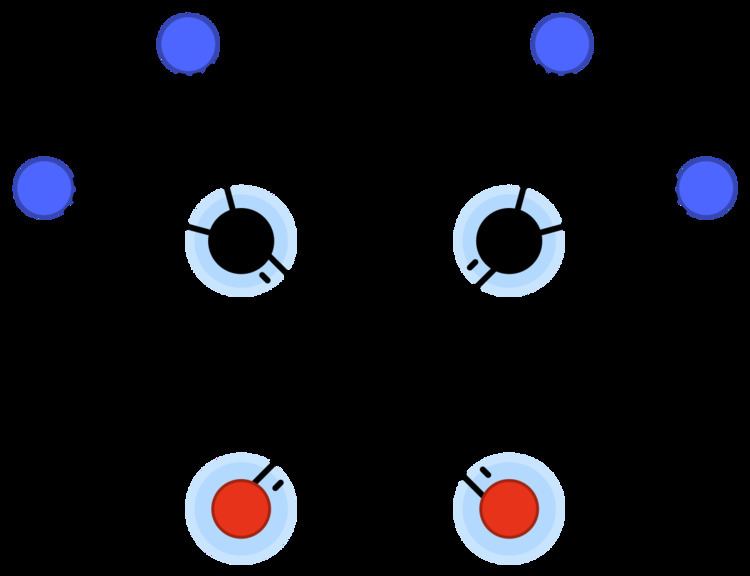 | ||
1,2-Bis(dicyanomethylene)squarate is a divalent anion with chemical formula C
10N
4O2−
2 or ((N≡C−)2C=)2(C4O2)2−. It is one of the pseudo-oxocarbon anions, as it can be described as a derivative of the squarate oxocarbon anion C
4O2−
4 through the replacement of two adjacent oxygen atoms by dicyanomethylene groups =C(−C≡N)2.
The anion can be obtained by reacting squaric acid with n-butanol to obtain the diester 1,2-dibutyl squarate (an oily orange liquid) and treating the latter with metallic sodium and malononitrile (N≡C−)2CH2 to give the trihydrated disodium salt 2Na+·C
10N
4O2−
2·3H2O, a yellow water-soluble solid. The hydrated salt loses the water below 100 °C, but the resulting anhydrous salt is stable up to 400 °C. Reaction of the sodium salt with the chlorides of other cations in ethanol affords the following salts:
2C
10N
4O2−
2, anhydrous, yellow, stable to 300 °C
2C
10N
4O2−
2, anhydrous, brown, stable to 300 °C
10N
4O2−
2· 4 1⁄2H2O, dark yellow, dehydrates at 60–106 °C, stable to 461 °C
10N
4O2−
2·9H2O, yellow, dehydrates at 50–90 °C, stable to 178 °C
10N
4O2−
2·2H2O, yellow, dehydrates at 87 °C, stable to 337 °C
10N
4O2−
2·H2O, yellow, dehydrates at 145 °C, stable to 323 °C
Nuclear magnetic resonance shows that the aromatic character of the squarate core is retained.
